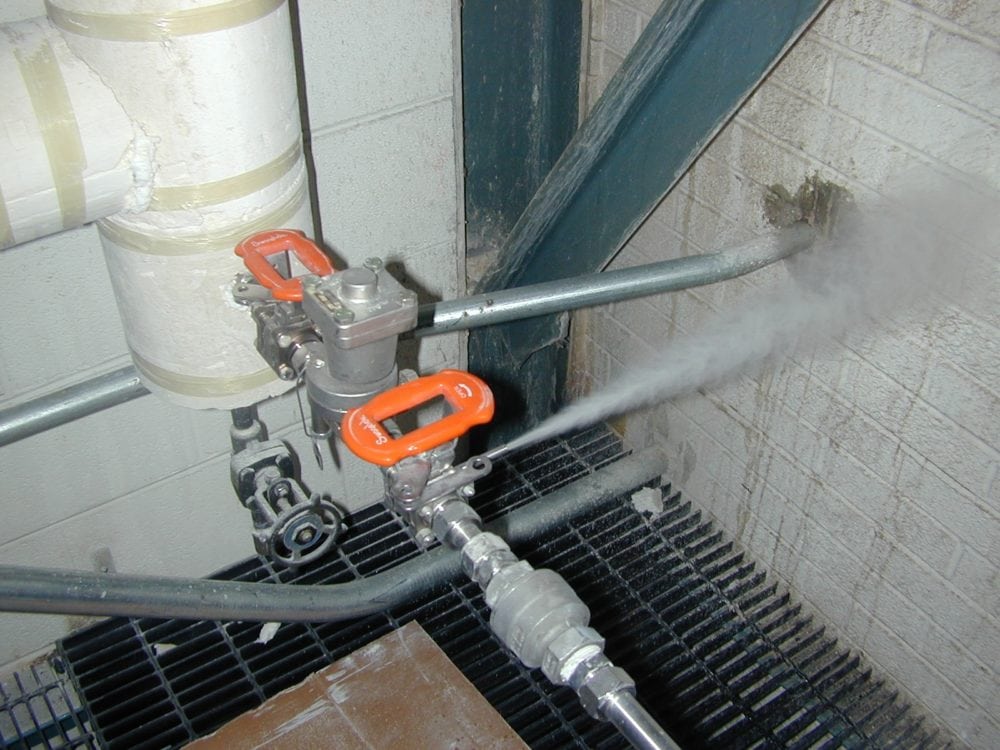Steam Trap Visual Testing Method

CLICK HERE TO READ FULL TECHNICAL PAPER
Visual testing for steam trap performance, which is one of the three different ways to test a steam trap. The three methods, visual, temperature, and the use of high-frequency ultrasound. But visual is a fast and easy method for testing steam traps, and anyone with a little training can accomplish testing steam traps. Negatives, higher initial installation costs. It is going to cost us a little more at installation to put visual indicators in. As you can see here, in the diagram here, that visual indicators are located right here. That is only one of several ways to do visual indication.
The other thing is, why test steam traps? Steam trap stations, number one need to be reliable. 15 years of operation or longer at any pressure lower than 300 PSI, it also must have proper operation. Any steam trap station assessment should have no more than 3% failure rate. But how to get to that low of a failure rate? You need to test and do root cause analysis.
When it comes to visual testing methods, there are two types of steam traps: on/off operation, which are inverted buckets, thermostatic, and thermodynamic, and a continuous flow type steam trap, which is the float and thermostatic design steam trap. As shown here in the video, this valve is activated, and you can see a discharge coming off the steam trap.
And I will talk about the discharge. What should we be looking for? Now, when we have a steam trap discharging to the atmosphere, as you can see right here in this video, the thing is it must have two-phase flow. We must have flash, and we also must have condensate the liquid. As you can see, we open the valve to the atmosphere, there is no flash. The steam trap was undersize, backing up condensate, causing severe water hammer. So, the visual is very powerful.
Another application. Steam trap is blowing, leaking, blowing, leaking, blowing. These are thermostatic design steam traps, which have a distinct on/off operation to them, so we should see a discharge and then a shutoff. So, essentially open to atmosphere, we can tell that they are blowing or leaking.
Now, inverted buckets are on/off operation, very distinct. Cycles on/off, and should stay off for at least 15 seconds, but can stay off for a longer period.
So, as you are seeing visual testing, it is very simple. Here is a thermodynamic design, another one of the different designs of steam traps we have. On/off, but the thermodynamic is very fast in its operation. Again, as the handle is activated here, and you will see the distinct on/off operation. So, this same trap is working properly. As you see in the off cycle, there is no steam or condensate coming out of it. So, when the trap comes to the cycle mode, you will see the discharge. Working properly. Now, if it is cycling extremely fast or completely blowing, then it is failed. And this one happens to be in the failed mode.
Now, the next type of a steam trap is the thermostatic design steam trap. And this is an on/off operation also. [inaudible 00:06:07]. Now a thermostatic design steam trap, would not know on/off operation, or completely failed. Again, as the handle’s activated, you will see the discharge. It never shuts off. Completely failed blowing through.
The next type of steam trap is float and thermostatic design. This steam trap does not have a distinct on/off operation. As you can see here, this is level. That is proper operation. And this happens to be another type of visual indication, which is a sight glass inside the steam trap body. The last is blowing through.
So, as you can see the different types of steam traps, visual indication it is very powerful. Very easy to do.
At our website we have many different technical papers and testing steam traps, besides all different applications for steam systems, installing steam safety valves. There are 64 best practices, many different articles and a number of videos up there for your view. Our information is generic, and we are here to help the steam world better understand steam systems.
Our short-term impact, we do steam engineering assessments, steam system balancing, steam system reliabilities, steam system engineering training. Long term, implementation engineering, project design, project management, full engineering support for a steam system changes, and condensate systems.
Thank you for your time. And please visit our website, which is located right here. And my email address, which is .com, which got cut out. Apologize for that. have a great day.










